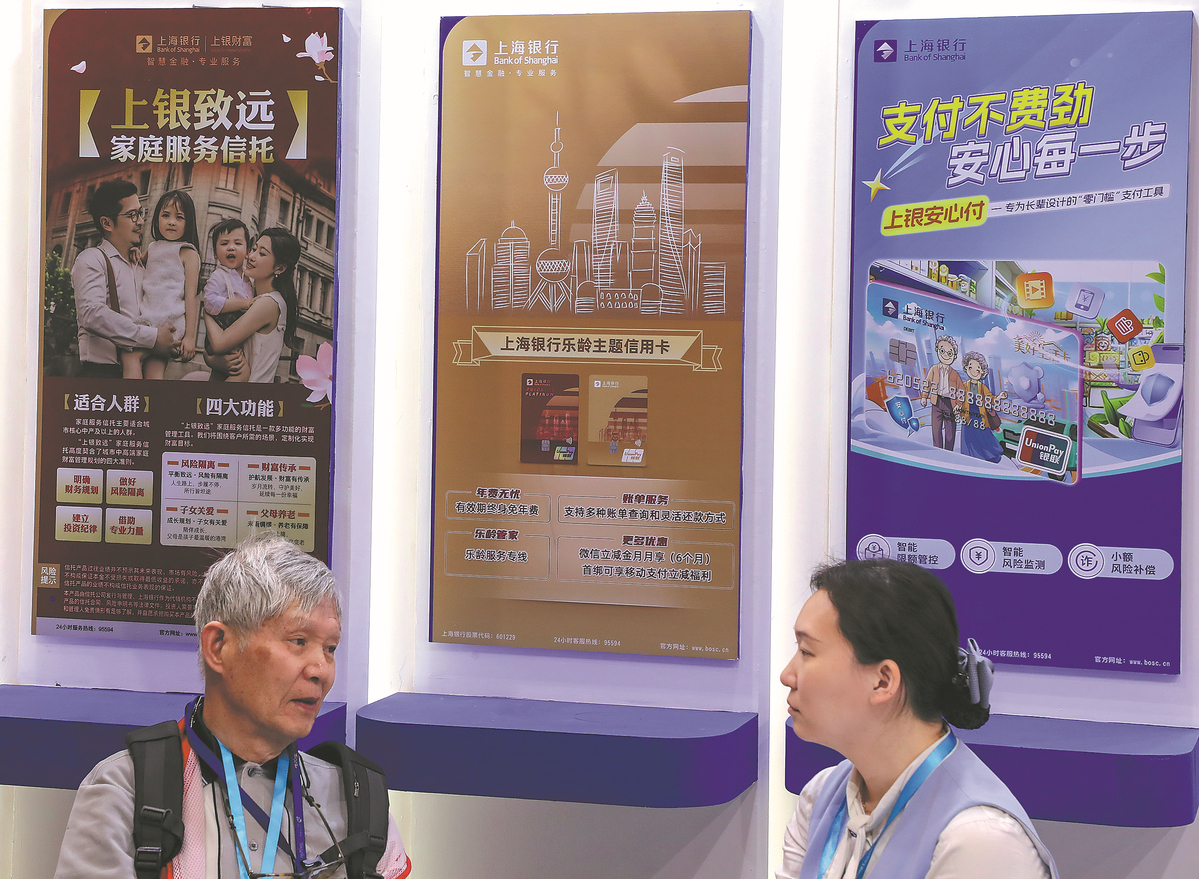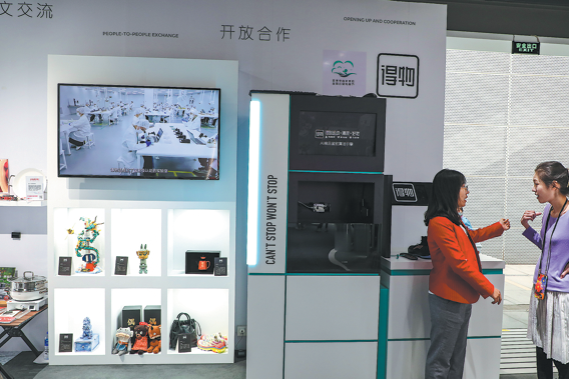Consumer credit industry on road to major transformation
Banks must shift from scale-driven growth to value-driven strategies, experts believe


China's credit card sector is facing mounting headwinds, with outstanding balances, transaction volumes and profitability trending downward in the first half of 2025, with analysts citing sluggish consumption recovery, intensifying competition from online lenders and shifting consumer demand toward simpler digital alternatives.
According to financial disclosures from 15 A-share listed national commercial banks, their total outstanding credit card loans stood at 7.56 trillion yuan ($1.06 trillion) by the end of June, down 2.52 percent from the end of last year. Only four banks — Industrial and Commercial Bank of China, Agricultural Bank of China, Shanghai Pudong Development Bank and China Zheshang Bank — reported growth in credit card loan balances.
The contraction is the result of multiple factors. The slow pace of consumption recovery is limiting offline card use, while online consumer finance platforms continue to siphon off demand for high-frequency, small-ticket loans, said Wu Zewei, a contract research fellow at Jiangsu Su Merchants Bank. Wu also noted that banks have been actively clearing dormant cards, optimizing account structures, and cutting back on credit card benefits, prompting some cardholders to voluntarily cancel their accounts.
The shift follows new regulations that China implemented on credit cards in 2024, designed to promote the standardized and healthy development of the credit card industry. The first half of this year became a critical period of transition, with commercial banks increasingly prioritizing refined operations for existing customers over expanding issuance and market share, analysts said.
Transaction data highlight the industry's slowdown. China Merchants Bank, a leader in retail banking, recorded 2.02 trillion yuan in credit card transactions in the first half, down 8.54 percent year-on-year. The bank's interest income from credit cards fell 4.96 percent to 30.61 billion yuan, while non-interest income slid 16.23 percent to 10.47 billion yuan. China Everbright Bank also reported shrinking results, with credit card income down 21.3 percent to 13.66 billion yuan.
Credit cards are entering a long and difficult transformation cycle, moving from rapid growth to high-quality development. The main features of this period are industry differentiation and survival of the fittest, said Wang Ying, executive vice-president of China Merchants Bank.
Central bank data underscore the downturn. By the end of the second quarter, the number of credit cards and combined credit-debit cards in circulation nationwide dropped to 715 million, marking the 11th consecutive quarterly decline and 11.4 percent slide from the peak of 807 million by the end of the third quarter of 2022.
Behind the numbers lies a shift in consumer behavior. Many cardholders now view multiple cards as unnecessary. Others cite shrinking perks as a reason for cutting cards, keeping only those with meaningful benefits.
In the past, banks attracted users with perks such as sign-up bonuses, reward point redemptions, and cashback offers. But in recent years, under the dual pressures of market-based interest rates and policies requiring financial institutions to prioritize supporting the real economy over profit-seeking, banks' profitability has been squeezed. As a result, they have to cut back on marketing spending and customer rewards.
Liu Siyang, an auto industry professional, said redeeming credit card points on online platforms has become less appealing, as most items require extra payment in addition to points and are often priced higher than on regular e-commerce sites.
Li Xin, a community worker who rarely travels for business, said airport lounge access and railway perks offered by many cards were of little use to her. She recently canceled a card after her bank warned that she would be charged an annual fee for not meeting the minimum spending requirement.
On top of a shrinking market, credit cards are losing ground to online consumer lending platforms. Many shoppers now turn to products such as Huabei on Taobao or JD Baitiao on JD.com for everyday purchases. Notably, more than 80 percent of new Huabei users in 2024 had never held a credit card before, making the platform their first exposure to consumer credit — a clear sign that online products are eroding banks' share of the market.
Wang Pengbo, chief financial industry analyst at market consultancy Botong Analysys, said younger consumers prefer internet-based credit tools embedded in consumption scenarios. Features such as "enjoy now, pay later", no annual fees and small, flexible credit lines align more closely with their spending habits.
Wang said the key shortcomings of credit cards lie in weak scenario adaptability and lagging user experience. Long-standing issues include annual fees, complex approval processes, poor repayment reminders and rigid credit limit management. He argued that banks need to improve in data operations, customer insights and agile product iteration, while also strengthening partnerships with e-commerce, travel and local lifestyle platforms to enhance the convenience of credit card usage.
Currently, banks are increasingly linking credit card services with their broader retail operations, seeking closer coordination between credit and debit card customer bases. China Everbright Bank and China Guangfa Bank, for instance, now waive annual credit card fees for clients who maintain qualifying asset levels with the bank.
Veteran credit card expert Dong Zheng said banks must shift from scale-driven growth to value-driven strategies, focusing on extracting value from existing customers. He expects future credit card transformation to center on two fronts: tapping the potential of high-end customers and meeting the essential needs of mass-market users.
jiangxueqing@chinadaily.com.cn





































